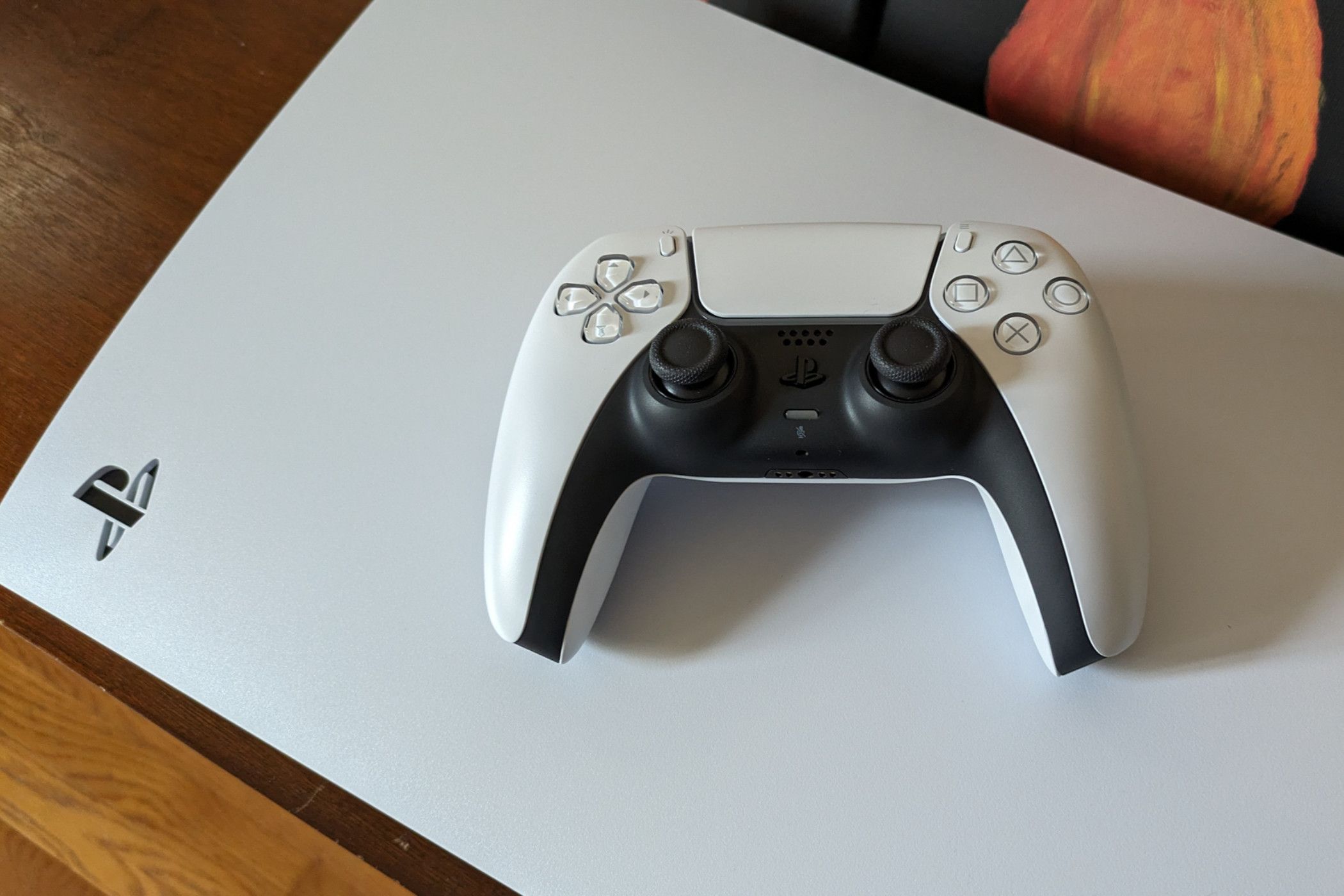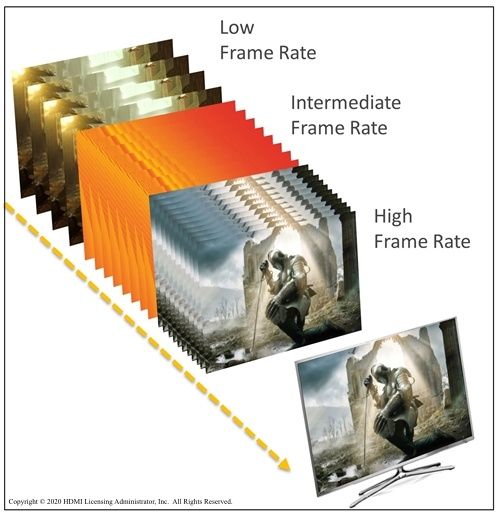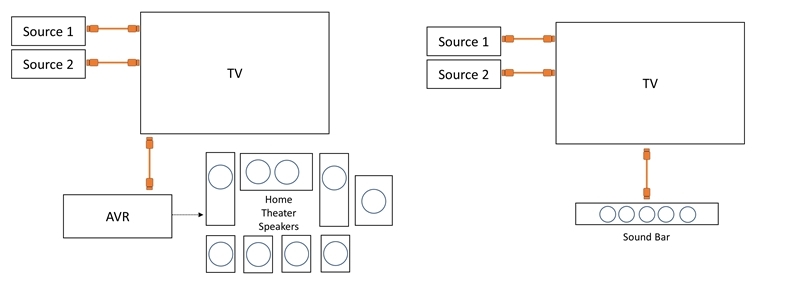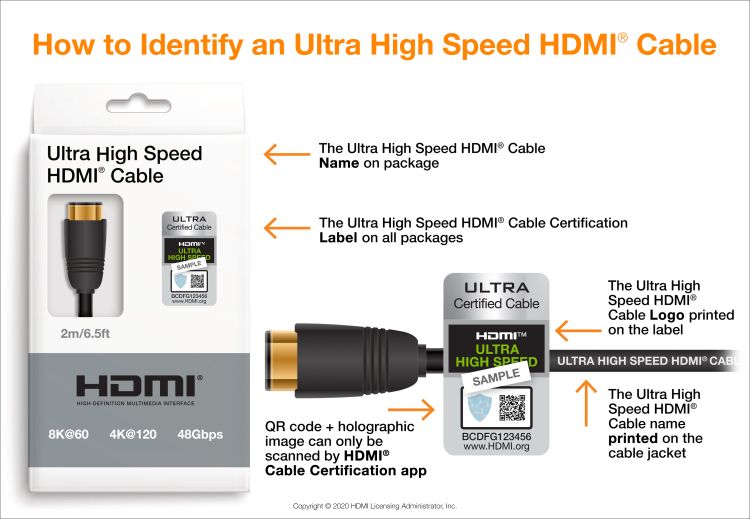Key Takeaways
- HDMI 2.1 supports 4K, 8K, and 10K signals at up to 120fps, best for gamers with modern consoles and GPUs.
- The standard also introduces support for dynamic HDR technologies like Dolby Vision, and HDR10+.
- HDMI 2.1 features native support for Variable Refresh Rate (VRR), Auto-Low Latency Mode (ALLM), Quick Frame Transport QFT, and Enhanced Audio Return Channel (eARC) but mostly benefits gamers with 120hz or better displays.
HDMI 2.1 is becoming more common on TVs and monitors, as users take advantage of higher resolutions, frame rates, and HDR content. So what’s the fuss all about, and is it time to upgrade?
Higher Bandwidth, More Pixels
Most displays on the market currently support the HDMI 2.0b standard, which has a bandwidth cap of 18Gbps. That’s enough to carry an uncompressed 4K signal at 60 frames per second at up to eight-bit color. This is adequate for the vast majority of uses, including watching UHD Blu-rays or playing games on a current or last-generation Xbox or PlayStation console.
The latest HDMI 2.1b standard adds support for an uncompressed 8K signal at 60 frames per second in 12-bit color. It achieves this with a bandwidth throughput of 48 Gbits per second. Using display stream compression (DSC), HDMI 2.1b can push a 10K signal at 120 frames per second in 12 bit.
Some monitors and TVs that support HDMI 2.1 use ports that only reach around 40Gbps. This is enough to handle a 4K signal at 120 frames per second in 10-bit color with HDR support. It’s enough to take full advantage of the 10-bit panels on consumer-grade TVs.
HDMI 2.1 is aimed mostly at gamers who own current-generation consoles and graphics cards. To take advantage of a 4K signal at 120Hz, you’ll need a TV that supports the standard.
Both the Xbox Series X and PlayStation 5 support 4K output at up to 120 frames per second with HDR support. NVIDIA’s 30 and 40 series graphics cards feature HDMI 2.1 support, as do AMD’s 6000 and 7000 series Radeon GPUs. Intel’s ARC series of GPUs have spotty HDMI 2.1 support, which varies from card to card.
If your TV doesn’t support HDMI 2.1, you’ll have to make do with a 4K signal running at only(!) 60 frames per second. The majority of titles for the last console generation ran at 30 frames per second. Many current-generation Xbox Series X and PlayStation 5 games offer performance modes that target 60fps, but support for 120 frames remains rare.
One unique use case for a 4K 120Hz output mode is a frame rate cap of 40 frames per second. Games like Ratchet and Clank: Rift Apart on the PS5 and Fallout 4‘s big 2024 update offer support for this frame rate as long as you have 120Hz output enabled. This is possible because a 120Hz refresh rate allows a game to deliver new frames at a 25ms interval, which results in smooth gameplay that wouldn’t look right at 60Hz.
While HDMI 2.1 support is more common than ever, you should still check to make sure any TV you’re buying supports the standard. Make sure that the panel refreshes at 120Hz and that there are enough HDMI 2.1 slots on the back to support the number of devices you’re hoping to connect.
Support for Dynamic HDR
With so much bandwidth available, there’s more room in the pipes for raw data, too. HDR stands for High Dynamic Range, and it enables a broader range of colors in content like movies and games. Older HDR standards, like HDR10, only support static metadata. However, the newer HDR10+ and Dolby Vision formats allow for dynamic metadata on a per-scene or frame basis.
Dynamic HDR provides a TV with more information about what to do with the signal it’s receiving. Rather than reading a single set of instructions for an entire movie, dynamic metadata gives the TV constant updates about how to tweak the image on-screen so it looks its best.
While every HDR-capable TV supports HDR10 with its static metadata, dynamic HDR is another beast altogether. The most widely supported format is Dolby Vision. It’s favored by hardware manufacturers including LG, Sony, Panasonic, and Philips. Samsung is going all-in on the less prevalent HDR10+, which also happens to be an open format (Dolby Vision, as the name suggests, is proprietary).
It’s important to note that you don’t need an HDMI 2.1 device to display HDR10+ and Dolby Vision—at least not at current 4K resolutions. If your TV supports it, it will stream Dolby Vision content from Netflix just fine using the bundled app.
Moving forward, HDMI 2.1 ensures plenty of bandwidth will be available for both metadata and high-resolution signals at high frame rates. This future-proofing will be necessary to display 8K and 10K content, whenever it becomes widely available (no, you shouldn’t buy an 8K TV yet).
The PlayStation 5 uses standard HDR10 for its HDR output, whereas the Xbox Series X can use either HDR10 or Dolby Vision for Games. Both of these technologies work under HDMI 2.0b at 60 frames per second, but you’ll need HDMI 2.1 support for 120Hz output.
Variable Refresh Rate (VRR)
A TV’s refresh rate is how many times the panel refreshes per second. This is measured in hertz, and it’s closely tied to the frame rate. When the two are out of sync, you get an effect called “screen tearing.” It’s caused by the display trying to show more than one frame simultaneously when the console or PC isn’t ready.
If you adjust the refresh rate of the display to match the frame rate of your console or PC, you can effectively eliminate screen tearing with no performance penalties. Companies like NVIDIA and AMD have their own methods of dealing with screen tearing, known as G-Sync and FreeSync, respectively.
However, the HDMI 2.1 standard also has its own independent solution, called HDMI Variable Refresh Rate (VRR). The Xbox Series X supports HDMI-VRR and AMD FreeSync, whereas the PlayStation 5 only supports HDMI-VRR.
For the best possible next-generation console experience, HDMI-VRR is a must. If you’re a PC gamer, you can use PC technologies like NVIDIA’s G-Sync and AMD’s FreeSync to add VRR support.
Auto Low Latency Mode (ALLM)
Another perk for next-gen console gamers is auto-low latency mode (ALLM). Most TVs now include all kinds of additional processing to smooth out motion, improve picture quality, and even boost audio clarity. While some of this is appreciated when watching TV and movies, for gamers, it introduces latency (lag).
This is what Game mode is for (not to be confused with Windows 11’s Game Mode). You can switch to Game Mode whenever you want the fastest possible response times from your TV. This is particularly handy for games that require fast, precise reflexes. The only problem is that, traditionally, TVs require that you turn Game mode on and off manually.
ALLM removes the need to do this. When your HDMI 2.1-compliant TV understands that you’re using a supported console, ALLM will disable any extra processing that might introduce lag. You don’t have to do anything at all to enable it—it’s baked into the HDMI standard.
Both the PlayStation 5 and Xbox Series X support ALLM natively when connected to an HDMI 2.1 display.
Quick Frame Transport (QFT)
Quick Frame Transport is another feature aimed at gamers that works in conjunction with ALLM to deliver a more responsive gaming experience. The feature prioritizes video frames in a bid to keep latency as low as possible.
If you want to take advantage of this feature, make sure any intermediary devices, like a surround sound receiver, are also compatible. This will ensure all of your devices work together to deliver a smooth, responsive experience. If you’re routing your console via a receiver that’s only rated for HDMI 2.0, you won’t get the benefit of QFT, even if your TV and console support it.
Have you ever noticed a screen going black shortly before you watch a video or trailer? This is because the display is adjusting its refresh rate to suit the content you’re about to watch. As different content uses different frame rates, your display has to sync to it, hence, the short blackout.
Sometimes, this might cause you to miss the first few seconds of a video. However, some content providers delay playback to account for the change. Assuming the resolution of whatever you’re watching remains the same, Quick Media Switching (QMS) eliminates the blackout caused by refresh rate changes.
This allows you to watch content with differing frame rates back-to-back, without a blackout. The feature uses HDMI VRR to smoothly transition from one refresh rate to another.
Enhanced Audio Return Channel (eARC)
ARC stands for Audio Return Channel. It allows you to send audio over HDMI to your soundbar or surround receiver without an additional optical audio cable. Whether you’re watching Netflix, playing a game on a console, or watching a Blu-ray, ARC ensures the audio is delivered to the right output.
Enhanced Audio Return Channel (eARC) is part of the HDMI 2.1 standard. Additional bandwidth available in HDMI 2.1 allows eARC to carry uncompressed 5.1, 7.1, and high-bit-rate or object-based audio at up to 192 kHz in 24-bit resolution. It does this with an audio bandwidth of 37 Mbits per second, compared with under 1 Mbit per second via regular ARC.
If you want to carry a Dolby Atmos signal over HDMI, you’ll need eARC. There are also a few other enhancements, like proper lip-sync correction as standard, better device discovery, and a dedicated eARC data channel.
Do HDMI 2.1 Devices Require Special Cables?
Since HDMI 2.1 has a higher bandwidth throughput, you’ll need HDMI 2.1-compliant cables to take advantage of the full feature set. The HDMI Licensing Administrator has approved a new “Ultra High Speed” label for these cables. You can check any cables you hope to buy have been certified to avoid buying “fake” HDMI 2.1 cables.
Any device that uses HDMI 2.1, like a game console or Blu-ray player, should include an HDMI 2.1 cable in the box. These cables won’t necessarily have passed a certification process, but that doesn’t mean there’s anything wrong with them.
Avoid spending over the odds on premium HDMI cables that promise high-quality data transfer and other marketing gimmicks. HDMI is a digital standard, which means the signal either makes it or it doesn’t. You might see stars or visual artifacts if your HDMI cable is failing. To replace it, check out our round-up of recommended HDMI 2.1 cables.
HDMI 2.1 Is Mostly for Gamers (for Now)
Most people don’t need HDMI 2.1, particularly if all you do is consume content like movies and TV. The improved standard mostly benefits gamers with current-generation consoles or modern graphics cards, who want features like HDMI VRR and ALLM. Outside of eARC, the new standard offers few benefits to home theater enthusiasts.
That said, if you’re shopping for a new TV there’s a good chance it will come with a few faster ports. If you need some inspiration check out our list of the best 4K TVs.










